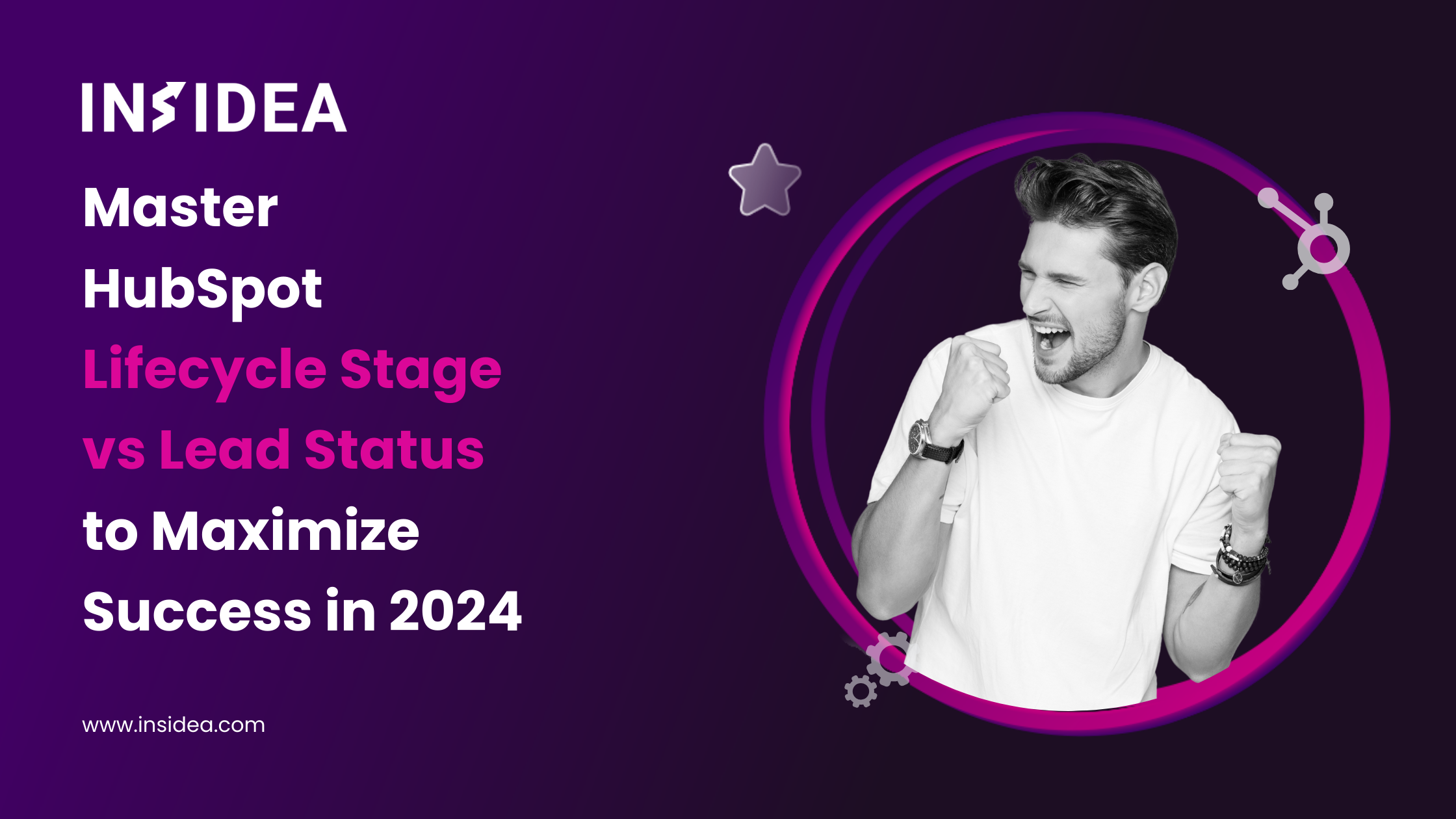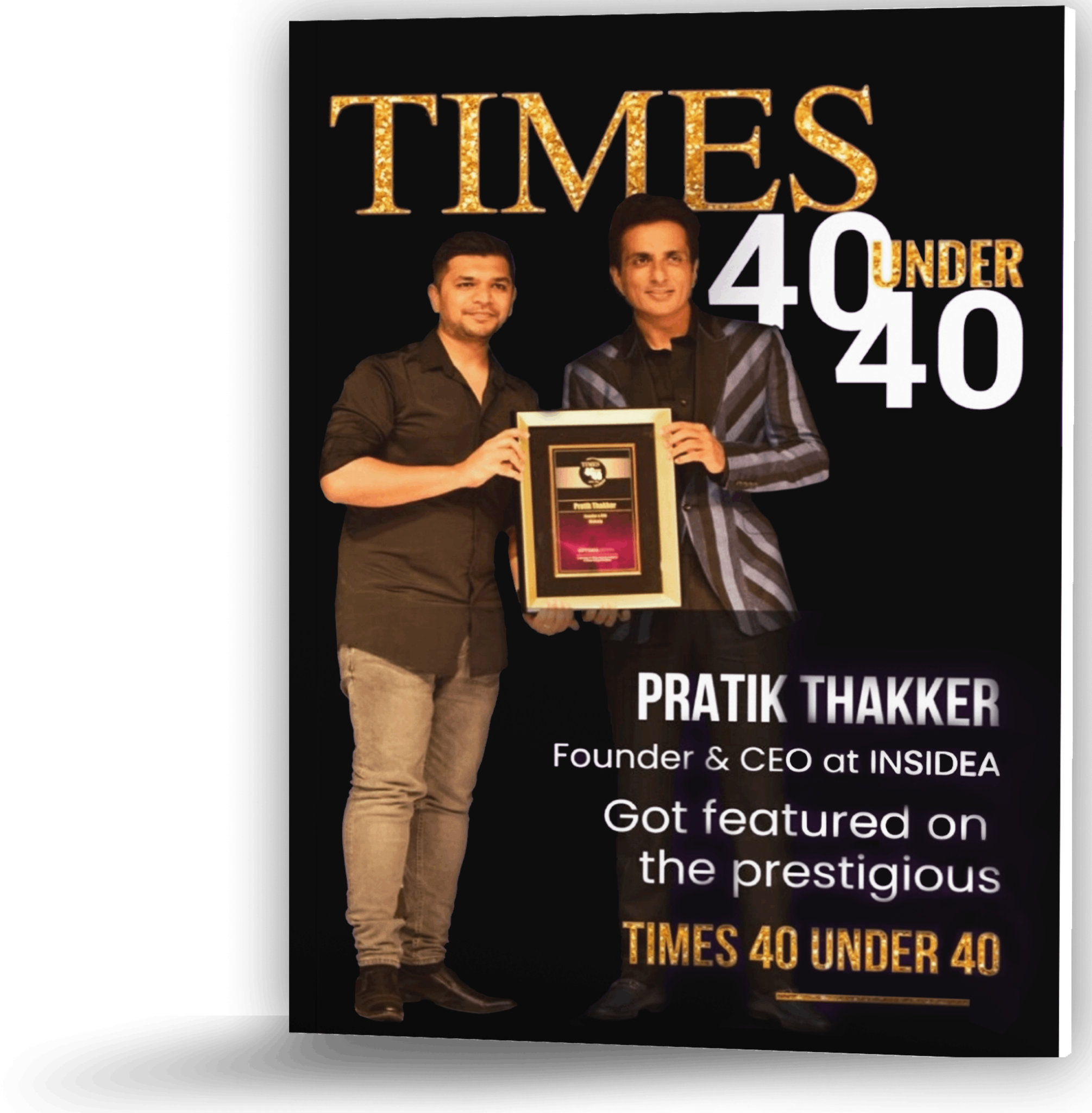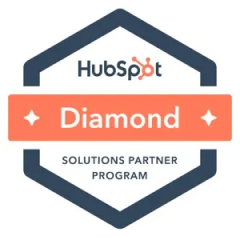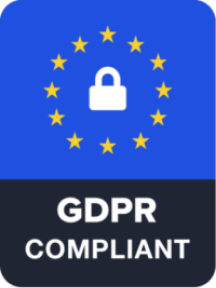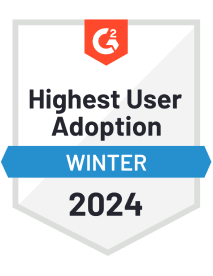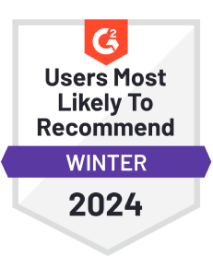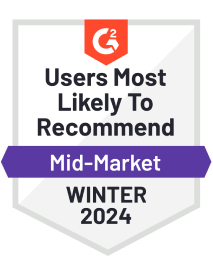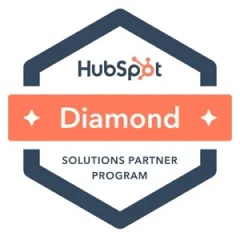If you’re using HubSpot to manage your sales and marketing efforts, you’ve likely come across the terms HubSpot lifecycle stage’ and lead status. At first glance, they might seem like different phrases for the same concept, but they’re actually quite distinct.
Understanding HubSpot lifecycle stage vs lead status can greatly affect how effectively you manage your leads and customers. In this blog, I’ll break down the HubSpot lifecycle stage vs lead status conundrum in simple terms.
Lifecycle stages in HubSpot help you track where a contact is in your marketing and sales process, from a first-time visitor to a loyal customer. On the other hand, lead status gives you a snapshot of how ready that lead is to buy based on their interactions with your sales team.
Whether you’re new to HubSpot or looking to refine your existing knowledge, getting a handle on these concepts is key. They’re not just jargon; they’re tools that, when used correctly, can help you better understand and engage with your audience.
HubSpot Lifecycle Stage vs Lead Status: Who Should Know the Difference and Why?
HubSpot lifecycle stage vs lead status should be understood by several key roles within an organization, especially those involved in sales, marketing, and customer relationship management. Here’s a breakdown of who should know these differences and why:
- Marketing Teams: Marketers must understand these concepts to create targeted campaigns and effectively nurture leads. Knowing where a lead is in the lifecycle stage helps craft appropriate messaging and offers. Understanding lead status is crucial for handing off leads to sales at the right time.
- Sales Teams: Sales professionals use this information to prioritize and personalize their outreach. Lead status informs them about a lead’s readiness to buy, while the lifecycle stage indicates the overall journey of a lead or customer, helping tailor the sales approach.
- Sales Managers and Directors: These leaders benefit from understanding these differences to manage their teams better, forecast sales, and refine sales processes. This helps them track lead progress and ensure that the sales team focuses on the right leads at the right time.
- Customer Success and Support Teams: While primarily a tool for sales and marketing, knowing the lifecycle stage can help success teams understand the customer journey and provide more personalized support.
- CRM Managers and Data Analysts: These professionals need to understand these concepts to ensure that the CRM system is set up correctly and that data is tracked and analyzed appropriately. This understanding is crucial for accurate reporting and insights.
- Business Leaders and Executives: Understanding these distinctions can help leaders make informed decisions about marketing and sales strategies, resource allocation, and overall business growth strategies.
- HubSpot Administrators and Technologists: Those responsible for setting up and maintaining HubSpot need a deep understanding of these concepts to configure the system to support the business’s unique processes and goals.
Anyone involved in attracting, engaging, and delighting customers in an organization using HubSpot should clearly understand HubSpot’s lifecycle stage vs lead status. This knowledge ensures that teams are aligned, processes are efficient, and customers receive the most relevant and timely interactions.
What is a Lifecycle Stage?
When exploring the concept of HubSpot lifecycle stage vs lead status, it’s important first to understand what a lifecycle stage is in the context of HubSpot.
Lifecycle stages in HubSpot are designed to reflect where a contact is in their buyer’s journey. They play a crucial role in coordinating the efforts of sales and marketing teams and ensuring that contacts who should not be marketed are appropriately excluded from engagement efforts. This categorization is essential for maintaining an organized and efficient CRM system.
A Comprehensive Breakdown of the HubSpot Lifecycle Stages
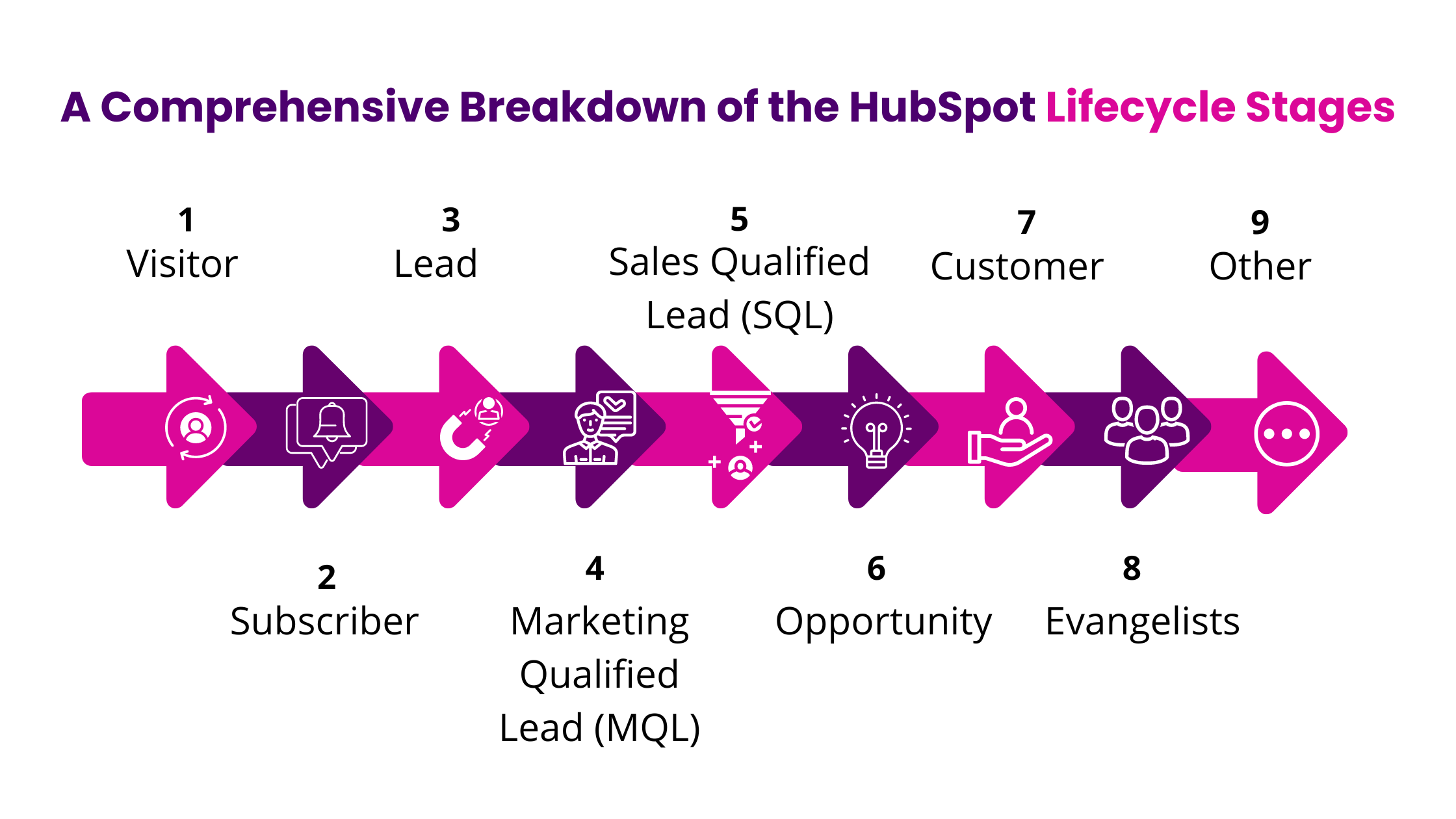
Here’s a detailed explanation of each lifecycle stage:
- Visitor: This is the starting point in the lifecycle stages. A visitor lands on your website, regardless of the channel they come from. They are in the earliest stage of potential engagement.
- Subscriber: Subscribers have shown initial interest in your content by opting in to receive updates, such as newsletters or blog subscriptions. They have not yet provided detailed information but have initiated a connection with your brand.
- Lead: A lead fits your Ideal Customer Profile (ICP) and has provided more than just basic contact information, indicating a higher level of interest. However, they have not yet shown enough buying intent to be considered qualified leads.
- Marketing Qualified Lead (MQL): These lead leads meet the criteria of a standard lead and have achieved a lead score of 100 or more, indicating a higher likelihood of progressing through the sales funnel.
- Sales Qualified Lead (SQL): An SQL is a contact who has engaged directly with your sales team through a discovery meeting and is considered a serious potential customer.
- Opportunity: This stage is for contacts associated with a potential deal in HubSpot. They represent genuine sales opportunities with a clear potential for closing a deal.
- Customer: This stage is for individuals or entities that have purchased your product or service, marking the successful conversion from lead to customer.
- Evangelists are customers who go beyond purchasing your product or service; they actively promote and advocate for your brand.
- Other: This category includes contacts requesting to be removed from your marketing efforts or otherwise disqualified. It is used to maintain accurate reporting throughout the customer journey.
What is the Importance of the Lifecycle Stage?
Lifecycle stages are pivotal in understanding and managing contact progression through the sales and marketing funnel. They allow for targeted marketing efforts, ensuring the right message reaches the right person at the right time.
By categorizing contacts into these stages, businesses can tailor their strategies to meet each group’s specific needs and interests, enhancing the efficiency and effectiveness of their sales and marketing initiatives.
What is Lead Status?
In the HubSpot lifecycle stage vs lead status context, understanding lead status in HubSpot is essential. Lead status in HubSpot is a critical component that focuses on the specific actions your sales team undertakes when a contact reaches the Sales Qualified Lead (SQL) lifecycle stage. While HubSpot provides default options for lead statuses, these can be customized to align with your unique sales process.
A Breakdown of Lead Status
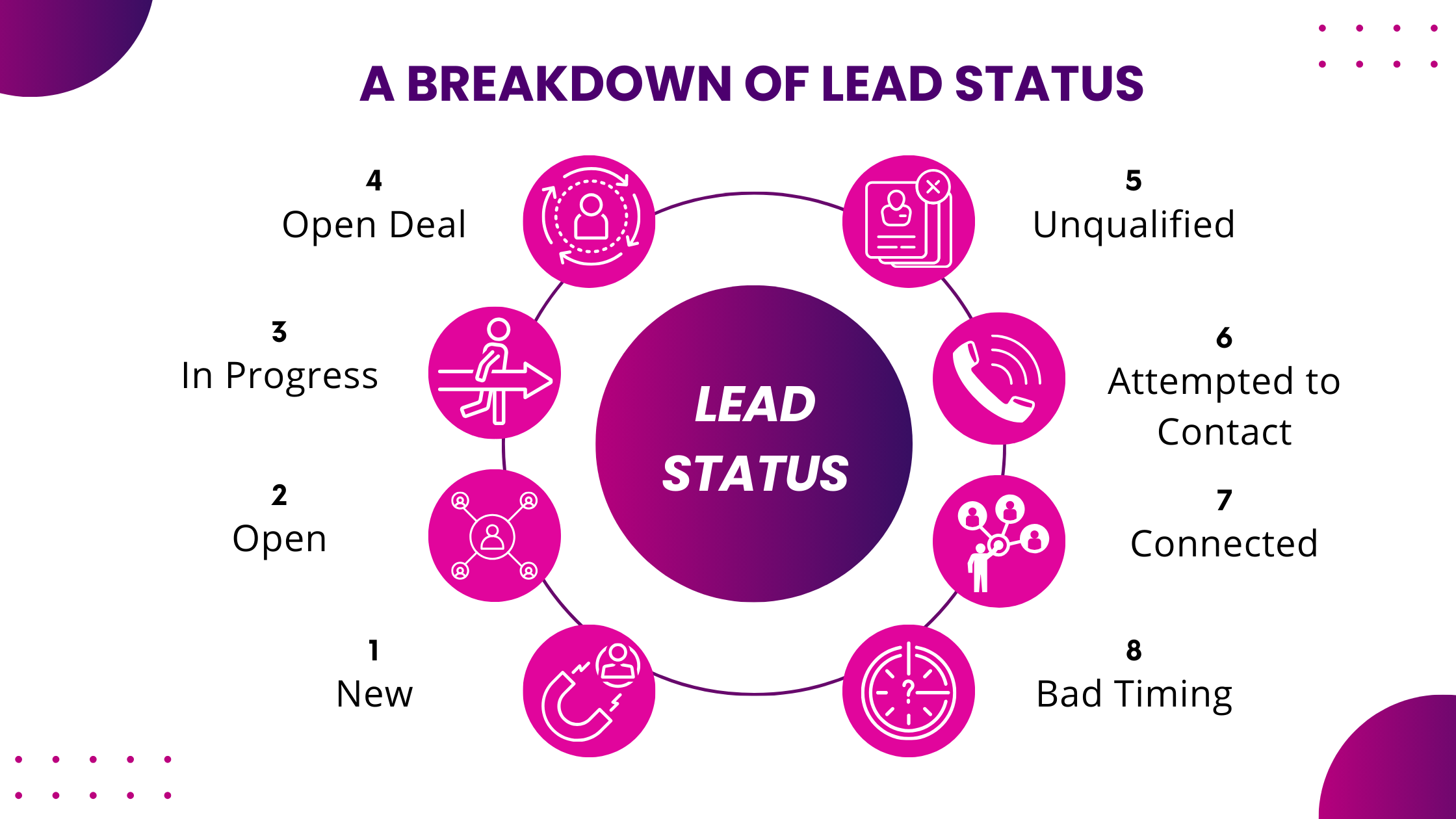
Here’s a detailed breakdown of each lead status
- New: This status is assigned to leads who have just entered your system and have not interacted with your sales team.
- Open: These are leads that the sales team has identified and plans to engage with, but no contact has been made yet.
- In Progress: This status indicates that the sales team has initiated contact with the lead and is actively engaged in a conversation or dialogue.
- Open Deal: At this stage, there is an ongoing deal with the lead, but it has not yet reached the point of closure.
- Unqualified: This status is used for leads that, upon evaluation, are deemed not to be a good fit for the product or service offered.
- Attempted to Contact: This status is for leads that the sales team has tried to reach out to but has not yet received a response.
- Connected: This indicates that successful contact has been established with the lead, and there is potential to progress in the sales process.
- Bad Timing: This status is used for leads who might be interested but indicate that the current time is unsuitable for them. These leads are often revisited in the future.
What is the Importance of Lead Status?
In the discussion of HubSpot lifecycle stage vs lead status, it’s crucial to recognize the role of lead status. The lead status provides a granular view of each lead’s position in the sales process. It helps sales teams prioritize their efforts, focusing on leads most likely to convert. By tracking the various statuses, sales teams can identify which leads require more nurturing and which are ready for direct engagement.
This system also offers insights into the effectiveness of marketing strategies by revealing patterns in lead behavior and conversion rates at different stages.
Lead status, in essence, adds depth and detail to the lifecycle stage, offering actionable insights for tailored sales approaches. The intricate details complement the broader strokes of the lifecycle stage, both essential for a comprehensive understanding of the customer journey.
How to Utilize Lifecycle Stages in HubSpot
This structured methodology enhances marketing and sales efforts, leading to better engagement and conversion rates. Let’s explore how these stages can be utilized effectively in HubSpot:
- Streamlining Marketing and Sales Processes
Lifecycle stages in HubSpot are fixed and cannot be modified, but they play a crucial role in streamlining your organization’s marketing and sales processes. You can effectively use these stages by setting up workflows that automatically update a contact’s lifecycle stage based on specific trigger events or activities.
- Creating Workflows for Lifecycle Stage Changes
Workflows in HubSpot are instrumental in automating the update of contact statuses and properties. By defining specific enrollment criteria, you can program workflows to transition a contact to a new lifecycle stage when they exhibit certain actions. This automation ensures that contacts are always categorized correctly according to their current stage in the buying process.
- Segmentation Using Lifecycle Stages
Lifecycle stages are also valuable for segmenting your contacts. By dividing contacts into groups based on their stage in the sales funnel, you can tailor your marketing content more effectively, ensuring it is relevant and engaging for each group.
How to Implement Lead Status in Your Sales Process
Customizing the lead status allows you to tailor the sales process to fit your organization’s needs and practices. Here are a few steps involved in implementing lead status in your sales process:
Step 1: Updating the Lead Status Property
The lead status property in HubSpot should be consistently updated to reflect the current state of each lead. This can be done manually for individual contacts or by importing and updating the status of contact lists. Additionally, users with professional or enterprise accounts have options like setting property value actions in workflows or using form hidden fields.
Step 2: Familiarizing with Default Statuses
It’s important to understand the default lead status options in HubSpot: New, Open, In Progress, Open Deal, Unqualified, Attempted to Contact, Connected, and Bad Timing. These statuses provide a framework for categorizing leads based on their interaction with your sales process.
Step 3: Customizing the Lead Status Property
If the default lead status options do not align with your sales process, you can customize them. To do this:
- Go to the Settings option in your HubSpot account.
- Click on Properties from the left sidebar menu.
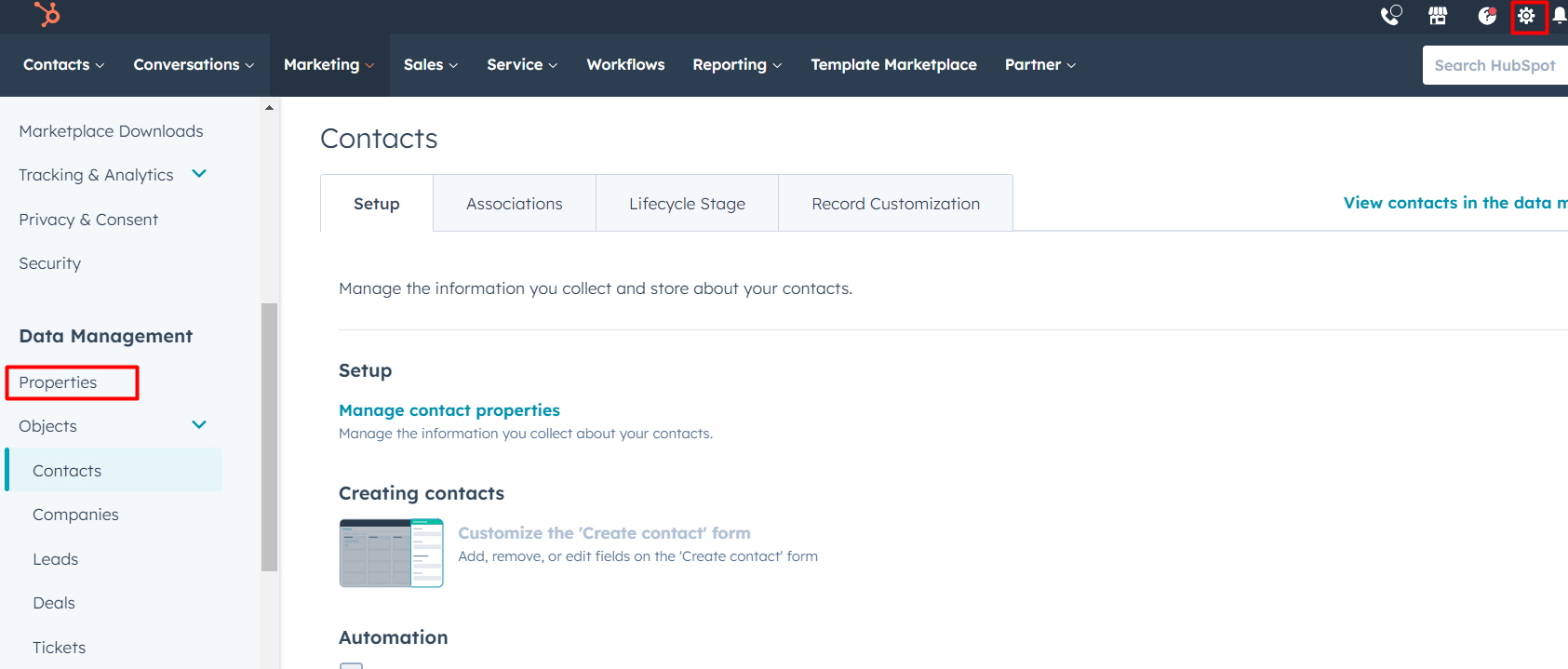
- Search for the Property: Lead Status.
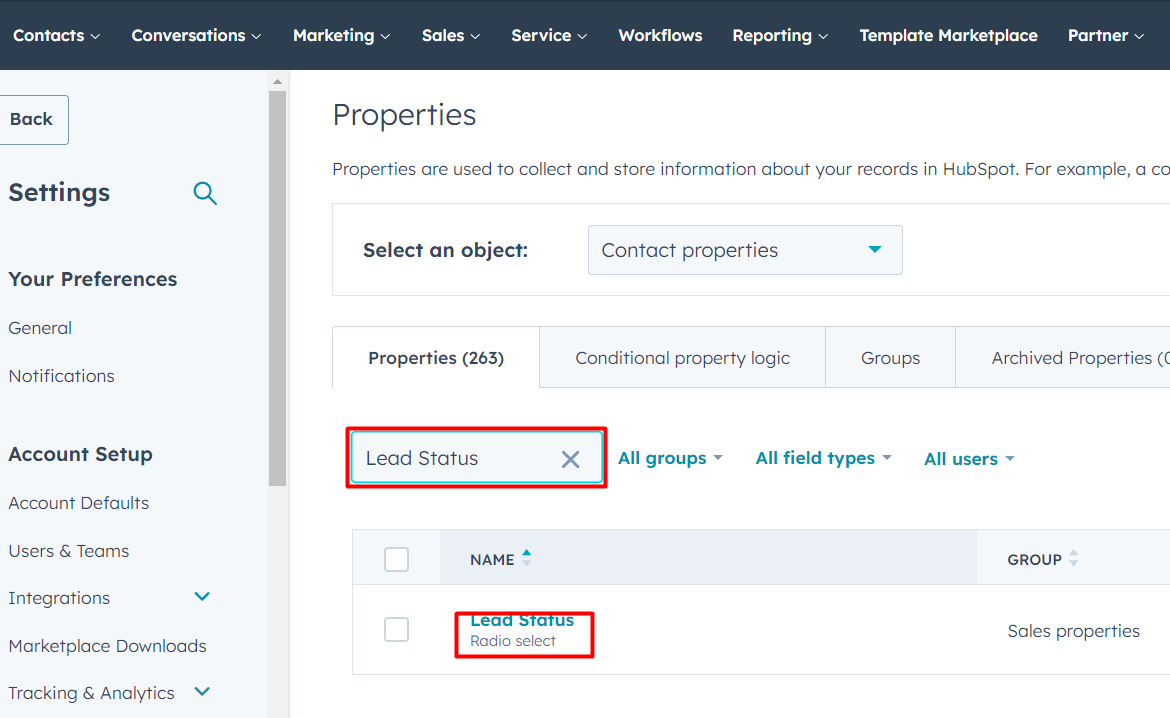
- Modify the Lead Status Labels and Internal Value as needed.
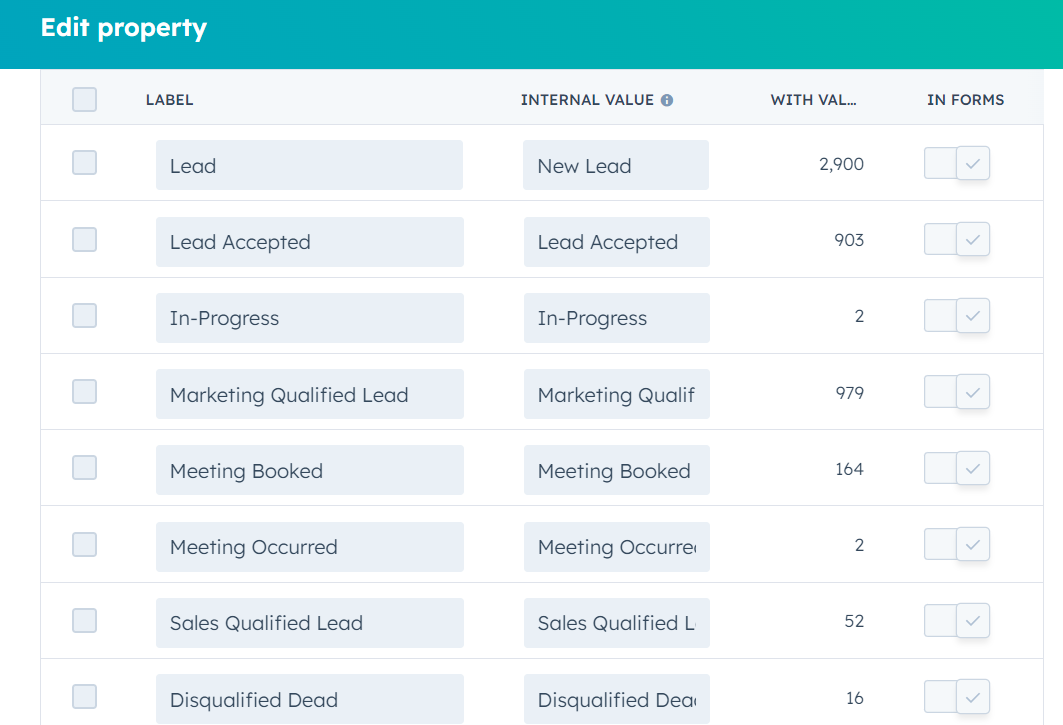
- Click Save to apply the changes.
By effectively using lifecycle stages and lead statuses, you can ensure a more organized, efficient, and tailored approach to managing your contacts and leads within HubSpot.
Synergizing Lifecycle Stages and Lead Status in HubSpot
In HubSpot, lifecycle stages and lead status are two pivotal components that, when used together, provide a comprehensive view of a contact’s journey through your sales and marketing funnel. Understanding how these elements interact and complement each other is crucial for effective lead management and progression.
How Lifecycle Stages and Lead Status Work Together
- Defining Transition Points
-
- From Subscriber to MQL: This transition typically involves engagement and scoring mechanisms. For instance, a subscriber becomes an MQL based on interactions with your content and reaching a certain lead score.
- From MQL to SQL: The transition from MQL to SQL is primarily governed by the lead status. This is where the sales team evaluates the lead’s readiness for sales engagement.
- From SQL to Opportunity: This stage involves moving the lead into the sales pipeline, indicating a higher likelihood of closing a deal.
- Understanding the Role of Lead Status
While lifecycle stages provide a broad overview of a contact’s position in the buying journey, lead status offers a more detailed view, especially at the SQL stage. It is a crucial indicator for pre-opportunity status qualification and helps route contacts not yet ready for a deal.
- Customizing Lifecycle Stages and Lead Status
-
- Lifecycle Stages: While HubSpot’s default lifecycle stages are fixed, you can create custom properties and workflows for your unique stages. However, sticking with the default stages is advisable unless there’s a strong justification for customization.
- Lead Status: In contrast, lead status is more flexible and can be edited to align with your business needs. This could involve simple changes like renaming statuses or adding a new status like “Nurture” to facilitate better communication between sales and marketing.
- Avoiding Overcomplication
A common pitfall in customizing lead status is adding too many options. Since salespeople manually set this status, an excessive number of choices can lead to confusion and inconsistency. Keeping the options straightforward and relevant to your sales process is important.
Key Differences: Lifecycle Stage vs Lead Status in HubSpot
In the dynamic world of customer relationship management, understanding the nuances of HubSpot lifecycle stage vs lead status is pivotal for any business aiming to streamline its sales and marketing processes. While often used interchangeably, these two concepts serve distinct roles in a lead’s journey through your sales funnel.
In this section, we’re going to look at HubSpot lifecycle stage vs lead status. Let’s see how each one plays a unique role in improving how you interact with potential and current customers, and how they can help move your business forward.
| Aspect | Lifecycle Stage | Lead Status |
| Scope and Application | Lifecycle stage offers a broad classification, providing a bird’s-eye view of where a contact is in their journey, from being a stranger to becoming a delighted customer. | Lead status is specific to the sales process, offering a detailed understanding of a lead’s current position within the sales pipeline. |
| Duration and Longevity | Contacts may remain in a particular lifecycle stage for an extended period, such as staying as a lead for years until they demonstrate buying intent. | The duration of a specific lead status can be shorter, especially for statuses like “New Lead” or “Attempted to Contact”. |
| Depth of Detail | Lifecycle Stage focuses on phases of the buyer’s journey, answering the question, “Where are they in their journey?” | Lead Status delves into actions and states within the sales process, answering, “What’s happening with the lead right now?” |
Why Use Both the Lifecycle Stage and Lead Status?
In managing your sales and marketing efforts, it’s crucial to understand and use both elements in the HubSpot lifecycle stage vs lead status framework. Let’s dive into why integrating these two features is advantageous for a comprehensive approach:
- Comprehensive Contact Overview
Using both lifecycle stages and lead statuses offers a complete picture of where each contact stands in your sales and marketing funnel. This dual approach allows for a more nuanced understanding of each contact’s journey and current status.
- Enhanced Segmentation for the Marketing
Lifecycle stage is instrumental in segmenting your contacts for targeted marketing campaigns. They enable you to categorize contacts based on their journey stage, from initial awareness to loyal customers, tailoring your marketing strategies accordingly.
- Informed Sales Strategies
Lead statuses provide detailed insights into the specific stages of your sales process. They help identify which leads are new, in progress, or require further nurturing, allowing sales teams to prioritize and tailor their outreach.
- Efficient Sales Process Monitoring
Lead statuses are key to tracking the efficiency of your sales process. They allow you to monitor how leads move through the sales pipeline and identify any bottlenecks or areas for improvement.
- Detailed Reporting and Analytics
You can access detailed reporting on your sales and marketing activities. This data is crucial for making informed decisions and strategizing future campaigns or sales approaches.
- Improved Lead Management
The combination of lifecycle stages and lead statuses ensures that no lead falls through the cracks. It ensures that every contact is nurtured and managed appropriately, enhancing the chances of conversion.
- Tailored Customer Experience
Understanding where a contact is in their lifecycle, and their current lead status enables you to provide a more personalized customer experience. This tailored approach can lead to higher engagement and customer satisfaction.
- Strategic Alignment Between Teams
Using both lifecycle stages and lead statuses ensures that your marketing and sales teams are aligned in their efforts. This alignment is crucial for a cohesive approach to lead generation and nurturing.
In summary, integrating lifecycle stages and lead statuses in HubSpot is a data-driven approach to your sales and marketing efforts, ensuring every lead is given the attention and nurturing it needs to potentially convert into a loyal customer.
Best Practices to Optimize Lead Status and Lifecycle Stages in HubSpot
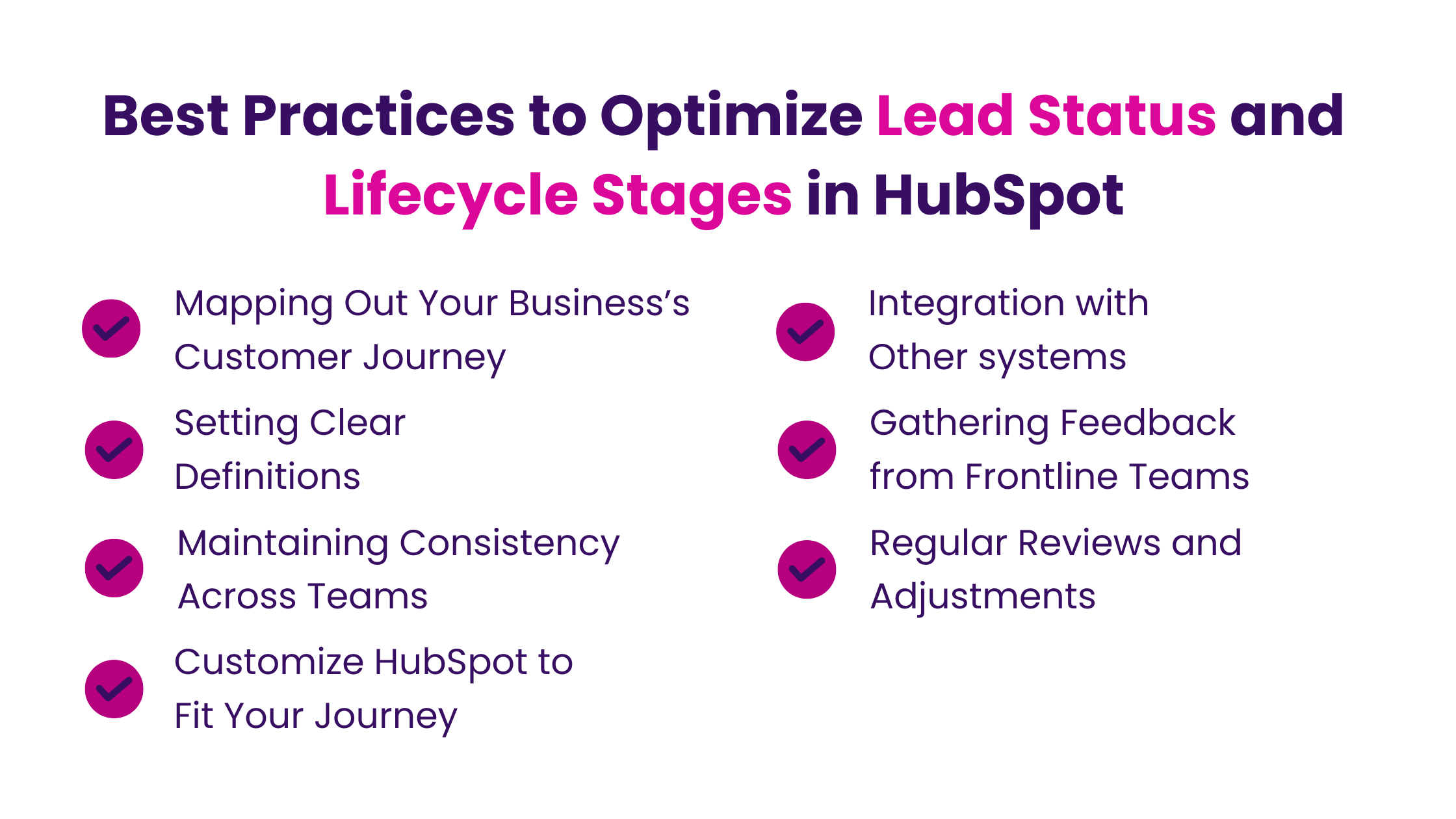
Every business has unique sales and marketing dynamics, making it essential to adapt tools like HubSpot’s lifecycle stage, lead status, and deal stages to fit these unique needs. HubSpot’s adaptability is a key strength, and here’s how you can harness this to benefit your business:
- Mapping Out Your Business’s Customer Journey
Begin by outlining your customer’s journey, from their first interaction with your brand to the final deal closure. This step is crucial in creating a framework for your lifecycle stages. Understanding each stage your customer goes through allows you to effectively align HubSpot’s features with your business process.
- Setting Clear Definitions
Define each lifecycle stage, lead status, and deal stage in simple, understandable terms. For instance:
- Lifecycle Stage – Lead: A contact who has shown interest, like downloading a lead magnet, but hasn’t been contacted yet.
- Lead Status – New: A new lead who the sales team hasn’t yet engaged.
- Deal Stage – Prospecting: The stage where potential customers are identified and their interest in the product or service is assessed.
These definitions should be clear to all team members and can be customized to reflect your business context.
- Maintaining Consistency Across Teams
It’s vital that all teams involved – from marketing to sales to customer service – understand and use these terms consistently. Consider providing HubSpot training to ensure everyone is on the same page.
- Customize HubSpot to Fit Your Journey
Tailor HubSpot’s lifecycle stages, lead statuses, and deal stages to mirror your customer journey map. HubSpot allows modifications like adding, renaming, or removing stages. However, be mindful of how changes might affect your existing data and aim for meaningful, purposeful adjustments.
- Integration with Other Systems
If you use other systems alongside HubSpot, align the terminology and stages for seamless data flow and to avoid confusion. Consistency across platforms is key to a smooth operation.
- Gathering Feedback from Frontline Teams
Regular feedback from your sales and marketing teams can provide invaluable insights. They use these tools daily and can offer perspectives on making them more effective and relevant to their tasks.
- Regular Reviews and Adjustments
As your business evolves, so should your use of HubSpot’s features. Regularly review and adjust your lifecycle stages, lead statuses, and deal stages to ensure they align with your business processes and goals.
In the dynamic world of customer relationship management, understanding the nuances of HubSpot lifecycle stage vs lead status is pivotal for any business aiming to streamline its sales and marketing processes. While often used interchangeably, these two concepts serve distinct roles in the journey of a lead through your sales funnel.
Unlock Your Business Potential With Expert HubSpot Support!
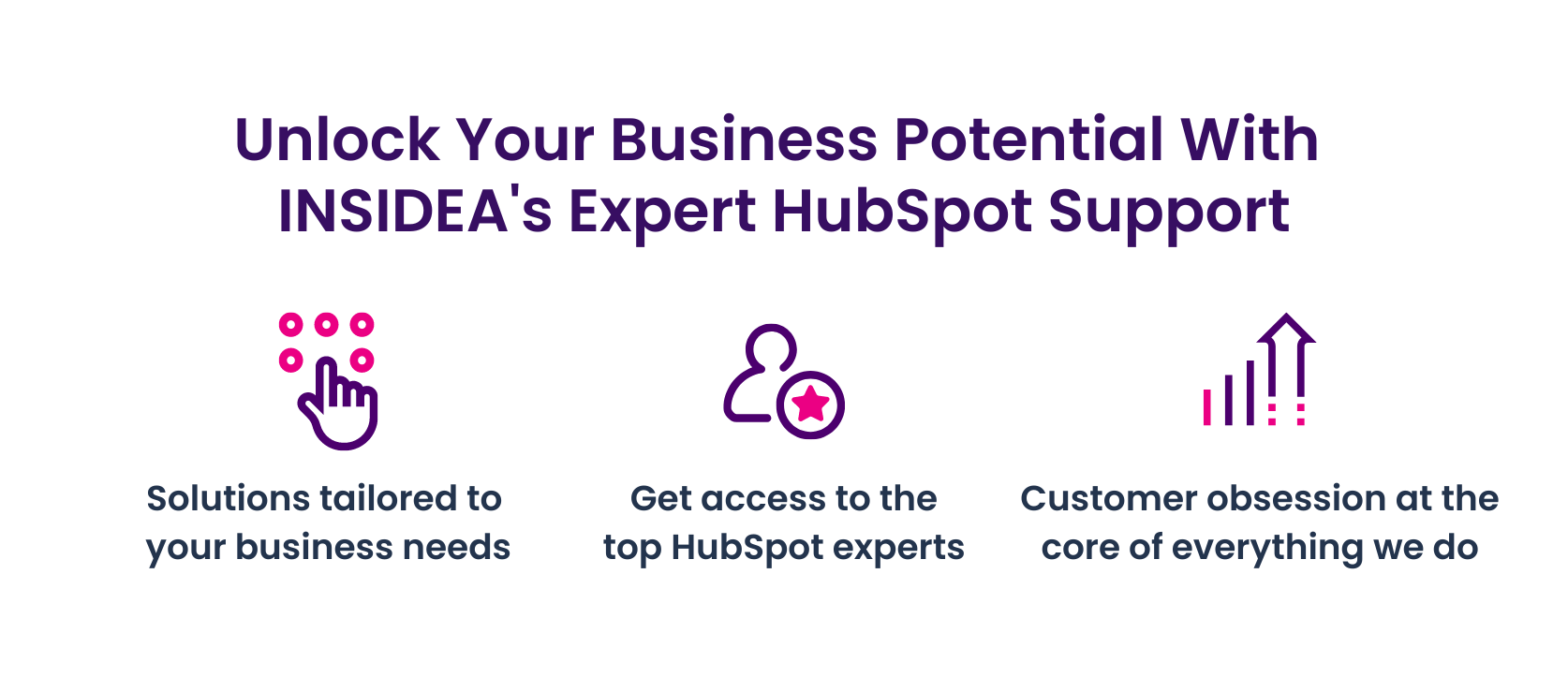
As a HubSpot Diamond Solutions Partner we take pride in assisting you with streamlining your HubSpot efforts. With our best-in-class marketing, sales, and service solutions, we help you scale exponentially.
INSIDEA’s HubSpot Specialists have the required in-depth knowledge and can provide you with expert guidance on how to use the platform to meet your specific business needs.
Get in touch today to learn more about how INSIDEA can help you succeed!
- Tailored Experience: For us, user experience is the primary focus. Thus, INSIDEA works with you to ensure your HubSpot experience is tailored to your business needs.
- Industry Expertise: Our team specializes in the setup, implementation, and optimization of HubSpot tools, as well as being well-versed in HubSpot best practices to ensure your business has the highest ROI possible.
- Customer Obsession: For us, customer satisfaction is the key to success, and we strive to ensure that our customers’ needs are not only met but exceeded every time.
At INSIDEA, we understand the importance of valuable HubSpot strategies that understand your target audience and drive conversions. Book a meeting with our HubSpot experts to explore how we can help you with your upcoming projects.
Get started now!




